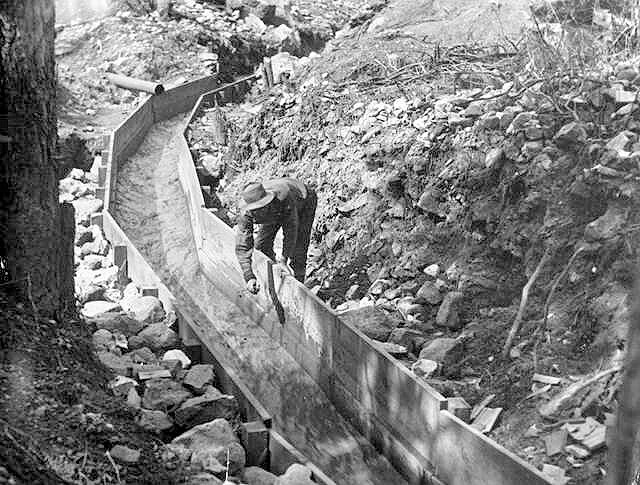Placer mining is the mining of stream bed (alluvial) deposits for minerals. This may be done by open-pit or by various surface excavating equipment or tunneling equipment.
19th-century miner pouring water into a rocker box which, when rocked back and forth, will help separate gold dust from the alluvium
A placer mine in Alma, Colorado in 1880
Plate depicting placer mining from the 1556 book De re metallica
Panning for gold in Korea, c. 1900
Hydraulic mining is a form of mining that uses high-pressure jets of water to dislodge rock material or move sediment. In the placer mining of gold or tin, the resulting water-sediment slurry is directed through sluice boxes to remove the gold. It is also used in mining kaolin and coal.
A miner using a hydraulic jet to mine for gold in California, from The Century Magazine January 1883
Gold miners excavate an eroded bluff with jets of water at a placer mine in Dutch Flat, California sometime between 1857 and 1870.
A man leans over a wooden sluice. Rocks line the outside of the wood boards that create the sluice.
The Malakoff Diggins, California, showing the effects of hydraulic mining on a hillside over a century later. Much of the effects of the mining was beyond the hills themselves, on the areas downstream of the water and sediment flow they produced.








